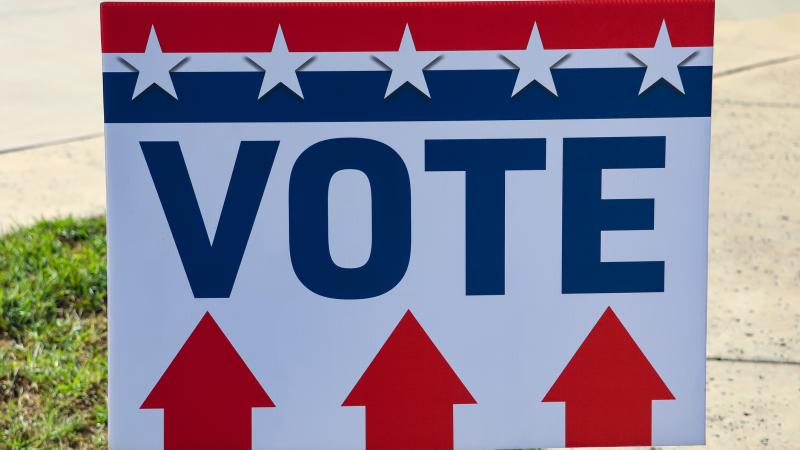CDC knew COVID vax associated with myocarditis but left off post-vax surveys
Data released under court order shows 1 in 3 among earliest populations to get vaccinated reported needing medical care, missing school or work, or inability to "perform normal daily activities." CDC still fighting to keep v-safe "free-text field data" secret.

The earliest demographics to get COVID-19 vaccines, such as healthcare workers, reported a surprisingly high rate of serious complications from them, according to data the CDC turned over under court order.
Among the 10 million-plus users of the agency's v-safe active monitoring smartphone app through July — 8.5 million of whom signed up between December 2020 and April 2021, before all adults were eligible for COVID vaccines — nearly 8% said they required medical care after receiving the vaccines.
For patients ages 3 and older needing such care, nearly 3 in 4 couldn't rely on telehealth visits. They required urgent care (48%), emergency room (15%) or hospitalization (10%). For infants, who were authorized to receive the jabs this summer and are enrolled in v-safe through parents or guardians, hospitalizations were much lower (2%) but urgent care much higher (66%).
Another 12% of v-safe users reported they were unable to perform normal daily activities, and 13% said they missed work or school, meaning 1 in 3 had more than mild adverse reactions.
Well over 10 million symptom reports were filed each month from January through April 2021, dropping to 5 million in May and hovering around 1 million for the next few months. The reports jumped above 2 million again in October following President Biden's vaccine mandates for roughly 100 million workers, and dropped to the low- to mid-hundred thousands from January through July 2022.
The v-safe data obtained thus far are posted by the Informed Consent Action Network as both interactive graphs and several gigabytes of files. It got them through ongoing Freedom of Information Act litigation against the CDC.
Those are just the data the CDC affirmatively sought through checkboxes on v-safe surveys, which are sent to users daily for the first week after each dose, then weekly for 6 weeks and 3, 6 and 12 months after the final dose.
It took a year and a half to get "five excel files which likely took the CDC minutes to download and produce," ICAN said in its portion of the Nov. 4 joint status report filed with the court.
Notably, chest pain and other cardiac symptoms that could indicate myocarditis and pericarditis — now known to be more common post-vaccination in people under 40 — are completely missing from the survey checkboxes, without which input data are harder to standardize.
V-safe users would have to write in cardiac symptoms on the survey form's "other" field, limited to 250 characters, for them to be counted. ICAN is still trying to compel the agency to turn over this "free-text field data," its lawyer Aaron Siri told Just the News.
The fact that the agency didn't prompt users to consider adverse events of special interest (AESI) it had already identified in an early v-safe protocol is "one of the best and most compelling pieces of evidence supporting premeditated [wrongful] conduct," Siri wrote in the second of what he told Just the News would be at least a 12-part series of posts on the disclosures.
"The CDC, in dozens of publications, relied on the data from v-safe to argue and support its recommendations regarding Covid-19 vaccination that upended the lives of tens of millions of Americans who refused to comply" with mandates, according to ICAN's portion of the Nov. 4 filing. Siri's firm alone has heard from "thousands" claiming "serious injuries" from COVID vaccines.
The checkbox figures add context to CDC researchers' peer-reviewed March study in The Lancet, which found that deaths following mRNA vaccination constituted 1.3% of reports to the passive Vaccine Adverse Events Reporting System.
Adding in 6.6% of reports with "serious" complications, from hospitalization to permanent disability, the VAERS figures roughly match v-safe reports for medical care.
Siri blasted the feds for withholding the data despite the fact that it was "deidentified" and already available to Oracle, which developed v-safe, in the first of the 12-part series.
Vaccine proponents can't claim the data were disingenuous reports by "anti-vaxxers," he wrote, given that the limited supply of the early days was prioritized for healthcare workers and long-term care facility residents in many states.
Those who signed up during the initial five-month window "were clamoring over each other to get the shot" amid geographically uneven vaccine availability, as memorialized by late night host Stephen Colbert's reverent choreographed ode to the vaccines, Siri said. Such "enthusiasts ... were arguably more prone to underreport symptoms than to overreport."
In the second part, Siri explained the significance of the CDC limiting checkboxes to 18 "mostly minor symptoms considered normal after vaccination," such as pain and fatigue.
V-safe surveys excluded myocarditis, seizures, Guillain-Barre Syndrome and other "adverse events of special interest" the CDC explicitly identified before deploying v-safe. Its Jan. 28, 2021 protocol covered 15 AESIs including myocarditis, anaphylaxis, multisystem inflammatory syndrome in children, spinal cord inflammation and death.
Earlier New England Journal of Medicine and Journal of the American Medical Association studies also discussed AESIs related to mRNA vaccination, from nervous system disorders to MIS-C, Siri noted.
By relegating such reports to the free-text field rather than checkboxes, from which it could calculate a rate of occurrence, the CDC doomed them, Siri said, to a lengthy and inconclusive process: direct contact with the user to confirm the report "actually reflected one of these conditions" and then helping them report it to the much more ambiguous VAERS.
While the CDC has agreed to produce birth years so ICAN can assess the data by birth cohorts, the agency appears to have left out further checkbox data as evidenced by a v-safe flow chart that mentions "call center," "call center pregnancy" and "pregnancy” data, ICAN's portion of the Nov. 4 filing says.
The CDC hopes to withhold the 6.8 million free-text entries from public release by proposing instead to "convert them into medical codes" over a few months, a process "more time consuming and complex then simply reviewing" the fields for personally identifying information, ICAN argues.
ICAN speculated the data "may run contrary to the recommendations it pushed to deprive people of their jobs, their livelihoods, schooling, military careers" and to the "CDC's claim that there was a low incidence of various serious issues, like tinnitus, myocarditis, and small fiber neuropathy, from this product."
The CDC's portion of the filing says it would be "premature and inefficient" for the court "to address the legality of CDC's withholdings in piecemeal fashion," as ICAN wants. The agency maintains that "the records at issue here are not reasonably segregable," an argument ICAN called "frivolous."
In a Nov. 14 text order, Judge Robert Pitman told the CDC to produce the "batch of records containing data derived from specific feedback survey questions" in two days and the birth years "as soon as practicable." He denied ICAN's proposed briefing schedule for the free-text fields.
The CDC did not respond to Just the News queries on why it hid the v-safe data for so long and left out the AESIs it had already identified from the surveys' checkboxes.
The Facts Inside Our Reporter's Notebook
Documents
Links
- v-safe active monitoring smartphone app
- all adults were eligible for COVID vaccines
- interactive graphs and several gigabytes of files
- Freedom of Information Act litigation against the CDC
- sent to users daily for the first week
- more common post-vaccination in people under 40
- CDC researchers' peer-reviewed March study
- Oracle, which developed v-safe
- first of the 12-part series
- geographically uneven vaccine availability
- Stephen Colbert's reverent choreographed ode
- second part
- "adverse events of special interest" the CDC explicitly identified
- New England Journal of Medicine
- Journal of the American Medical Association
- v-safe flow chart
















